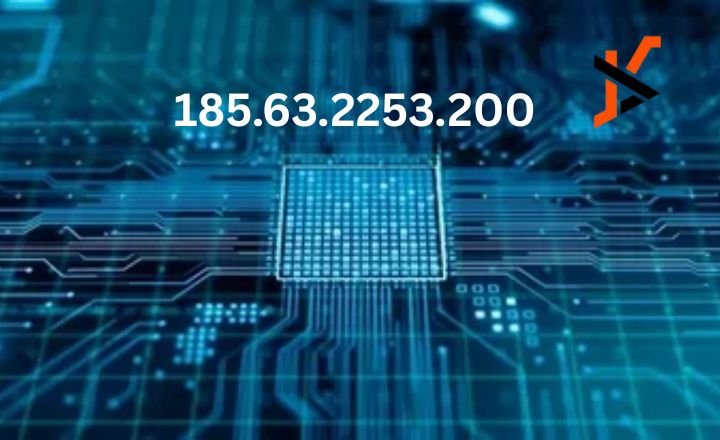
185.63.2253.200 Explained: What It Means and Why It Matters
Have you ever stumbled across something like 185.63.2253.200 and wondered, “What on earth is that?” Don’t worry—you’re not alone. While this might look like just a string of random numbers, it actually points to something quite specific and potentially important. In this article, we’ll explore what 185.63.2253.200 is, what it could represent, and why you should care—even if you’re not a tech expert.
Think of it like a house address on the internet. If the web were a vast city, then 185.63.2253.200 would be a particular building’s street address. But there’s a lot more to it, and we’re here to break it down in simple terms.
1. What is 185.63.2253.200?
Let’s get this out of the way first: 185.63.2253.200 is not a valid IP address.
In IPv4 formatting, each number (or “octet”) in the address must be between 0 and 255. That last part—2253—is too large. So what gives?
It could be a typo, a trick, or an intentionally malformed address used in scams or phishing attempts. Regardless, its unusual format raises questions worth exploring.
2. Understanding IP Addresses
Think of an IP address as the home address of a device connected to the internet. Every smartphone, laptop, or website has one. Without these, the internet would be total chaos—like trying to send a letter without knowing the recipient’s address.
There are two main types:
- IPv4 (like 192.168.1.1)
- IPv6 (longer and contains letters too)
IPv4 is more common, and that’s what 185.63.2253.200 seems to mimic—though incorrectly.
3. Why the Format of 185.63.2253.200 Matters
Imagine dialing a phone number with one digit too many. It just won’t connect, right? Same goes for IP addresses. If even one part is out of range or mistyped, it leads nowhere—or worse, somewhere dangerous.
Since 2253 is greater than 255, this IP isn’t formatted correctly under IPv4 standards. That’s a big red flag.
4. IPv4 vs IPv6: Which is It?
As mentioned, IPv4 looks like four numbers separated by periods, like 123.45.67.89. Each number is between 0–255.
IPv6 looks very different—like 2001:0db8:85a3:0000:0000:8a2e:0370:7334—and is made to handle the internet’s growing size.
So, no—185.63.2253.200 isn’t IPv6 either. It’s just… wrong.
5. Is 185.63.2253.200 a Valid IP Address?
Nope. It’s invalid.
That means no legitimate computer or website should be using this IP. If you see it in your system logs or browser, it could be:
- A typo
- Malicious code
- A misconfiguration
This invalid IP might be used to confuse systems or trick users.
6. Common Uses of IP Addresses Like 185.63.2253.200
Sometimes, unusual IPs are created intentionally:
- For testing software or firewalls
- As honeypots to detect hackers
- In phishing emails to seem legit
Unfortunately, fake IPs are also common in scams.
7. How to Trace 185.63.2253.200
Want to trace an IP? You can use tools like:
- Whois Lookup
- IP Location Trackers
- Command-line tools (like
tracertorping)
But since 185.63.2253.200 is invalid, most tools will return errors or nothing at all. That’s a clue right there.
8. Can You Block or Allow 185.63.2253.200?
Firewalls and network software let you block specific IPs.
If this one shows up, add it to your blocklist, just in case. Even though it’s invalid, some systems might try to process it—and that’s a vulnerability.
9. Security Concerns Around Unknown IPs
Would you open the door to a stranger who gave you a fake address? Of course not.
Same goes online. If an unknown IP (especially an invalid one like this) tries to connect with you, it’s best to assume it’s up to no good. These can be used in:
- DDoS attacks
- Malware injections
- Data harvesting
10. How to Identify Suspicious IP Activity
Here’s how to spot shady IP behavior:
- Unexpected access attempts in your logs
- Repeated connection tries from unknown addresses
- Weird URLs containing suspicious IPs
Use antivirus and network monitoring tools to help you track this.
11. IP Addresses in Everyday Life
You may not realize it, but IP addresses are everywhere. Every time you:
- Visit a website
- Watch a video
- Send an email
…your device uses an IP address to do it. It’s like your personal passport on the internet highway.
12. What Happens When You Click an Unknown IP?
Ever seen a weird IP link like httphttps://www.techreviewscorner.com/185-63-2253-200/://185.63.2253.200? Clicking it might:
- Do nothing (since it’s invalid)
- Redirect you to a scam site
- Start a download (yikes!)
So unless you’re sure it’s safe—don’t click it.
13. Using Tools to Check IP Details
Here are a few free tools to check IP addresses:
- iplocation.net
- VirusTotal
- AbuseIPDB
Pop an IP in there, and you’ll see if it’s been reported, where it’s from, and whether it’s suspicious.
14. What to Do if 185.63.2253.200 Appears in Your Logs
If this shows up in your system logs:
- Don’t panic.
- Check if it’s a misconfiguration.
- Scan your system for malware.
- Add it to your blocklist if unsure.
- Watch for other unusual activity.
🔚 To sum things up, 185.63.2253.200 might look like just another technical string, but it actually teaches us a lot abhttps://ventsmagazine.co.uk/185-63-2253-200-understanding-this-ip-address/out how the internet works—and how it can be abused.
While the address itself isn’t valid (because of that out-of-range number), it’s a good reminder to be careful about what we click, what we trust, and how we manage our digital security. Whether it’s just a typo or something shady, being informed is the best defense.
The world of IP addresses might seem like alphabet soup, but you don’t need to be a tech wizard to protect yourself. Just stay alert, stay curious, and when in doubt—ask questions like the ones above.

Responses